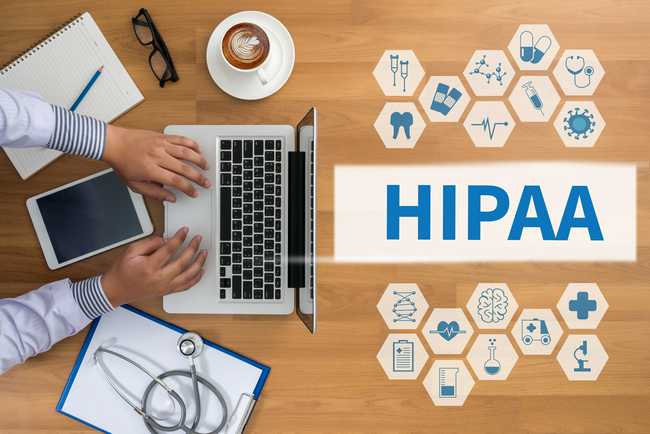Staying safe can be tough when it seems like contaminants are anywhere.

One way to protect against this is to have a standard set of guidelines to use at all times. This cuts down on decision fatigue and helps us stay protected.
In the coronavirus pandemic, virus transmission can happen pretty much anywhere. People can be contagious without knowing, and the virus can spread from something as simple as a sneeze.
Universal precautions and standard precautions can help. These guidelines treat fluids as though they’re contagious. Knowing the differences between standard precautions vs. universal precautions can help you understand how to protect yourself from the disease.
These guidelines apply to a wide variety of professions. They include hand washing, decontamination, and personal protective equipment (PPE) like gloves and masks.
And during the pandemic, they have become relevant for everyday people as well, even outside the workplace.
The History of Standard Precautions vs. Universal Precautions
Terminology can be confusing without some historical context.
At first, standard precautions might seem like a baseline. Universal precautions, on the other hand, sound like they would cover more situations. But in reality, neither of these is true.
Standard precautions came about after universal precautions. This piece of knowledge might help you understand the dynamics better. In a way, standard precautions were an extension of universal precautions.
The HIV epidemic
Universal precautions came about in the 1980s, a time when public health experts were mainly worried about blood. Diseases like human immunodeficiency virus (HIV) and hepatitis B were among the top concerns.
Before universal precautions, serious precautions were sometimes reserved for patients with a confirmed illness. This led to many tricky situations, as you might imagine. Many diseases don’t result in symptoms for years.
Because workers didn’t always know whether someone’s blood was contaminated, they may not have always made the right call. This is especially relevant in emergency scenarios when there isn’t always enough time to do a test first.
Universal precautions brought a change to the system. Under these guidelines, workers would use careful safety measures whether or not a patient had a confirmed illness.
Body Substance Isolation
Two years later, the Centers for Disease Control and Prevention (CDC) released another set of standards. They called these Body Substance Isolation measures.
Body Substance Isolation focused on providing barriers between people and other people’s body fluids. The idea was to isolate the fluid (or substance) to minimize the risk of various types of transmission. This includes contact transmission as well as droplet transmission.
These new guidelines were an addition to universal precautions, but they were more general. Body Substance Isolation applied to “all moist and potentially infectious body substances.” This broad language paved the way for standard precautions.
The Flu and Other Viruses
After a few decades, public health experts realized they needed a new standard for protection against disease. People needed to focus more on the dangers of fluids besides blood.
For example, the 21st century saw the dangers of widespread flu epidemics. These were often spread by fluids that weren’t blood. Saliva and other fluids became more important than before.
The word “standard” in standard precautions isn’t meant to convey a sense of basics. Instead, it was designed to mark a new standard for safety guidelines.
Modern Usage
In recent years, standard precautions have grown to be the main recommendation from many sources. Some fields recommend universal precautions but expand the set of fluids to cover relevant fluids for the profession.
At the same time, many people still need help following universal precautions. Some workers might not have the proper equipment to follow the guidelines. Others might have missed crucial training.
These days, health precautions are not limited to the workplace. Flu epidemics (and the current pandemic) have placed new responsibilities on everyday people.
This includes people who aren’t used to following special precautions. And it expands the places where people need to use them. It’s no longer just the workplace—now, people need to be safe at home and in public spaces.
What Changes During a Pandemic?
In general, pandemics come with stronger needs for public health guidelines. Years before we knew about the COVID-19 pandemic, experts prepared for the possibility of a pandemic.
They sometimes recommended universal precautions at a minimum in the case of normal viruses like the seasonal flu. But they made sure to note that things would change in the case of a pandemic flu. During COVID-19, standard precautions have become the new minimum.
Some people are even calling for a new set of pandemic guidelines for COVID-19. This could be a promising turn of events for public safety.
The basic elements of universal precautions are as important now as ever. People can have COVID-19 and be asymptomatic, so it makes sense to treat all fluids as if they might be contagious.
Transmission-Based Precautions
Besides standard precautions and universal precautions, there are also transmission-based precautions. They can be paired with standard precautions for a stronger level of protection.
Workers often use transmission-based precautions when they know a patient has a certain illness. Then the guidelines go back to standard precautions if the patient recovers.
For the coronavirus, most patients need to wait 10 days after their first symptoms and 24 hours after their last fever in order to go back to normal precautions. They also need to show an improvement in symptoms.
Get Educated in Order to Get Prepared!
When you first start learning about pathogen safety, knowing your way around standard precautions vs. universal precautions can go a long way. For both, the basic idea is to assume that a fluid is infectious whether or not you’re certain. This way, you can protect yourself and others from the widest range of risks.
Have you had to learn a new set of precautions for your workplace, school, or home? Tell us your story in the comments below!